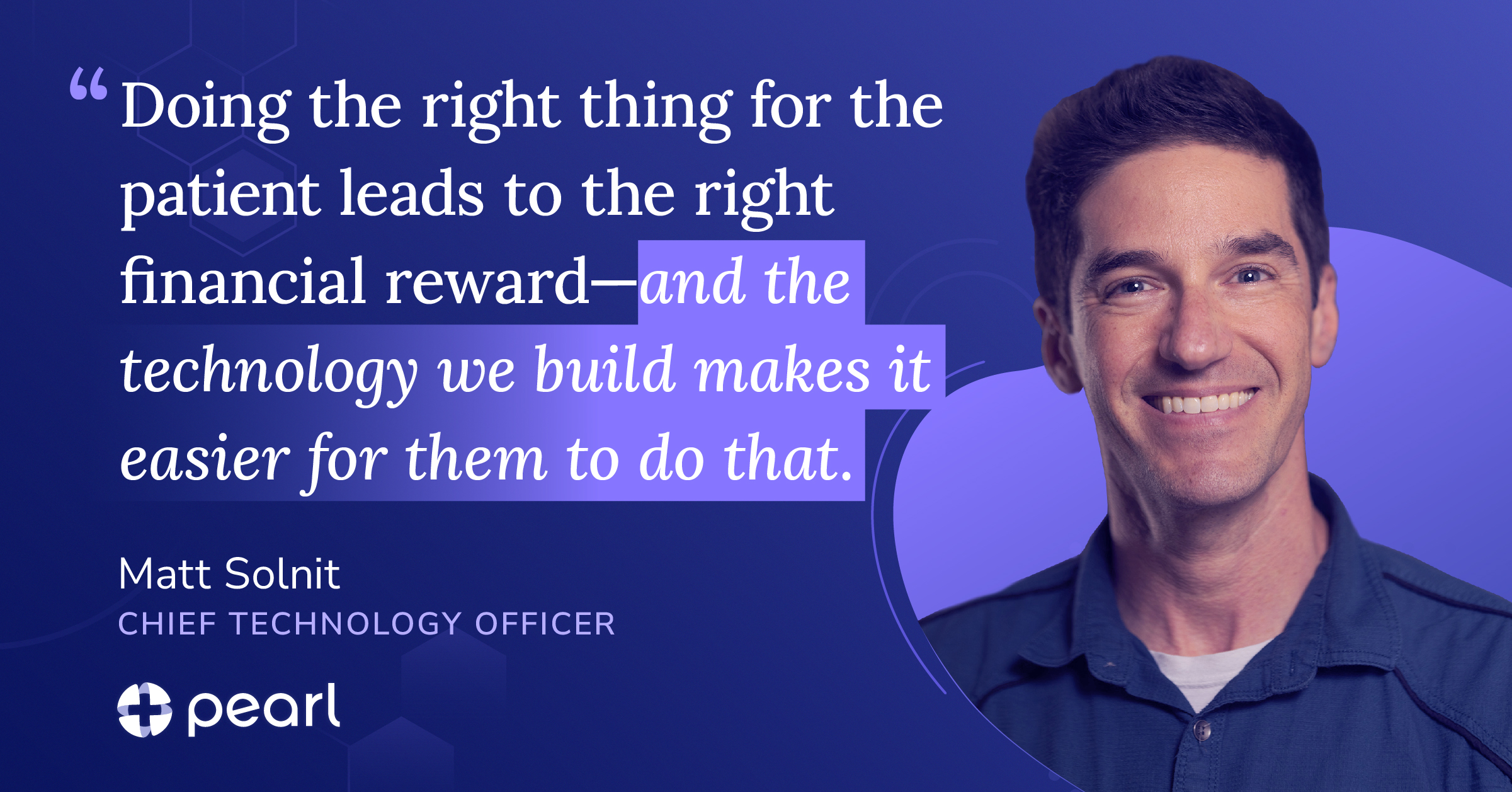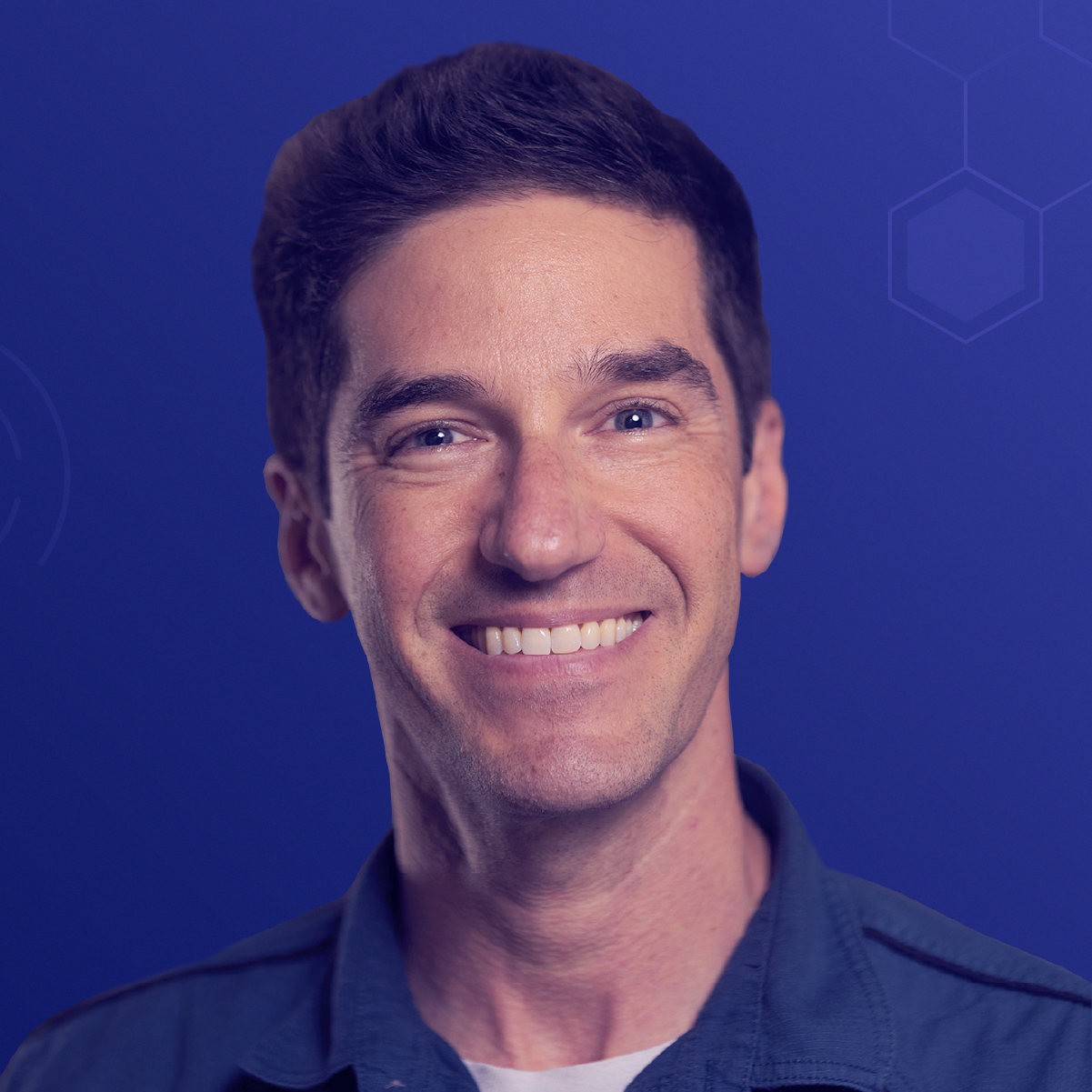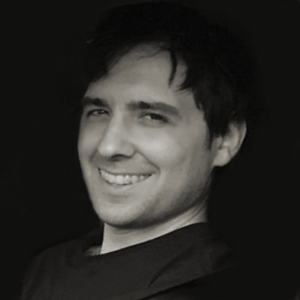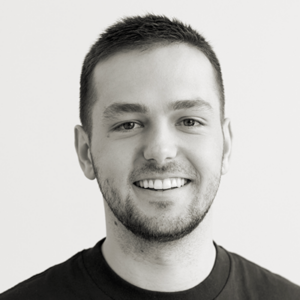At Pearl Health, we talk a lot about empowering primary care providers and transforming the way healthcare is delivered. But behind the scenes, it takes serious engineering, experimentation, and collaboration to make that vision a reality. Matt Solnit, Pearl’s Chief Technology Officer, has been leading this charge since 2022—helping build a smarter, more responsive platform that supports providers and patients alike.
We sat down with Matt to talk about predictive technology, the power of AI, and why he believes Pearl’s team-first culture is essential to tackling some of healthcare’s most complex challenges.
Pearl has grown a lot in the last few years. How would you describe where the company is today compared to when you started?
We’re still a startup, and that means we’re always experimenting—but today, we’re doing that from a solid foundation. We’ve got a clear system and approach. We know what kind of impact we want to make, and we have the tools to measure it. That gives us the confidence to move quickly and meaningfully.
What’s one of the most exciting advancements you’ve seen from the tech team recently?
Two big ones. First, we have enough data now to do predictive modeling. We can tell doctors with reasonable confidence when a patient is likely to wind up in the ER—and suggest interventions. It’s not about being right 100% of the time. It’s about making a real difference for patients who wouldn’t have otherwise received timely care.
Second, we can now prove that it’s working. We can measure the causal impact of those interventions. That level of accountability and rigor is a huge deal.
What’s your go-to way to describe Pearl to someone outside of healthcare?
If I’ve only got ten seconds, I say: we help doctors take better care of their patients.
If I’ve got more time, I’ll talk about how our tools make it easier for doctors to act on the information that matters most—and how our financial structure rewards doctors for taking the best possible care of their patients, even if that means fewer appointments.
How would you describe Pearl’s culture?
Team-oriented. There’s no other way to work on something as big and complex as value-based care. The work we’re doing is so complicated that no one person can ever make this happen on their own. It has to be a team. No one person can do it alone. I think people come in and realize quickly, “This only works if we collaborate.” That mindset runs deep here.
Also, we’re mission-driven—and a little nerdy. You won’t find many places with this many inside jokes about healthcare policy.
What role is AI playing in the future of your work?
In every possible way. This space is moving so fast, and the only way to keep up is to try everything—see what works, learn from what doesn’t, and reset constantly. We use AI to surface patient opportunities, automate communication, prep doctors with context, support customer success… the list goes on.
One of the most exciting ideas we’re working on is AI-powered coaching for provider practices. Imagine giving practices not just a generic dashboard, but an AI that understands their situation “on the ground” – their community, their regional trends, what types of care are available – and combines that with raw data about the actual patients It can help prioritize work, but it can also “listen” to doctors (via chat), hear their specific concerns, and then suggest next steps based on what’s worked for others. That’s the kind of thing that could really scale our impact.
You alluded to experimentation. Are there any fun ways you’re personally using AI?
With the launch of GPT-5 this week, we’re in the middle of a big reset. Everything is an experiment. Personally, it’s been fun trying things that failed on older AI models. GPT-5 is great for creating fun little game apps, because it’s better at improvising. When it doesn’t understand the rules of the game, it’ll make something up that might be even more fun than what I had in mind.
I’ve also been testing ways to make documentation easier—because let’s face it, no one loves writing SOPs from scratch. One trick I use is having an AI interview me. I tell it how to structure the interview, and then “hand it the mic”. From there on out, I just answer questions, and when it has enough, it stops and generates the doc. It lowers the mental load, and I get better output than if I were staring at a blank page.
Others on the team are doing similar things—recording conversations, feeding transcripts into AI, and getting structured content in return. It’s a great way to capture knowledge without making it a chore.
If you could switch jobs with someone at Pearl for a day, who would it be?
Any of the individual contributors on my team. Partly because I miss the hands-on work, but mostly because they’re doing fantastic things—solving hard problems with cool tools. That’d be my ideal work vacation.
As Pearl continues to scale its technology and expand its reach, Matt’s leadership helps ensure that experimentation and execution go hand in hand. Whether he’s brainstorming with engineers, testing new AI workflows, or scooping a swarm of bees into a backyard hive (yes, really), Matt brings a deep curiosity and pragmatic optimism to everything he does.
Interested in joining the Pearl team? We’re currently hiring across various departments and roles. Check out opportunities on our Careers Page.




